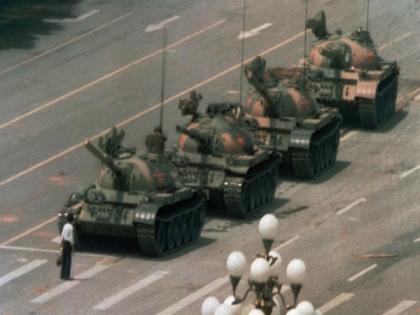China rules with iron fist even after three decades of Tiananmen massacre
By ANI | Published: April 9, 2022 06:35 PM2022-04-09T18:35:05+5:302022-04-09T18:45:02+5:30
Even after three decades of the Tiananmen massacre, the Chinese Communist Party (CCP) rules the nation with an iron fist and continues to systematically undermine the rights and freedoms of the people.

China rules with iron fist even after three decades of Tiananmen massacre
Even after three decades of the Tiananmen massacre, the Chinese Communist Party (CCP) rules the nation with an iron fist and continues to systematically undermine the rights and freedoms of the people.
Experts regard the Tiananmen massacre as a pivotal moment in the country's history where the Communist Party leadership set the stage for the next 30 years of its ruthless rule.
On the night of June 3, 1989, the ruling CCP regime not only crushed a nationwide, peaceful protest but also strangled the hopes of any democratic reforms in the country. The military opened fire and killed untold numbers of peaceful protesters and bystanders. In Beijing, some citizens attacked army convoys and burned vehicles in response to the military's violence.
"In the immediate aftermath of the Tiananmen massacre, the Chinese leadership launched a 'Patriotic Education Campaign' from kindergarten to university levels, according to Canadian think tank International Forum For Rights And Security (IFFRAS).
"Students were forced to study the 'Outline on the Implementation of Patriotic Education.' Textbooks were changed to prove that China was a victim of the policies of the West and Japan. A 'rising China' against the rest of the world became the main theme," IFFRAS said.
Even after 30 years, according to the think tank, cultural amnesia surrounded the bloody massacre.
"Even decades after the incident, the actual number of the dead remained unknown. Families of the deceased couldn't mourn their dead while exiles couldn't return home even to attend the funeral. Countless were detained and sent behind the bars for years without any trial for just speaking about the incident," IFFRAS wrote.
Further, the think tank said there is no mention of the massacre in school textbooks or in the media.
"A systematic suppression and state-sponsored manipulation of history means the generation born after the incident hardly knows about its government's brutal crackdown on its own people. Hong Kong was the only place in the country where the massacre was being openly commemorated," it said.
In Hong Kong, for three straight years, the authorities banned the annual vigil to commemorate the massacre, citing Covid-19 restrictions, even though the city has managed the pandemic well and social distancing rules have been eased.
"The Pillar of Shame", a sculpture created by Danish artist Jens Galschiot to commemorate the 1989 Tiananmen Square massacre, had been on the University of Hong Kong (HKU) campus since 1997. Students traditionally cleaned the sculpture annually on 4 June to remember the events of Tiananmen Square.
On October 8, 2021, the HKU decided to remove the sculpture from campus. The university explained its decision was based on a risk assessment and legal advice.
Last December, the university removed the Pillar of Shame, citing potential safety issues and legal risks. The University's governing council said the statue would be placed in storage pending further legal advice.
Later, the Chinese University of Hong Kong and the Lingnan University, removed monuments commemorating the Tiananmen Square massacre from their campuses, citing similar reasons.
( With inputs from ANI )
Disclaimer: This post has been auto-published from an agency feed without any modifications to the text and has not been reviewed by an editor
Open in app